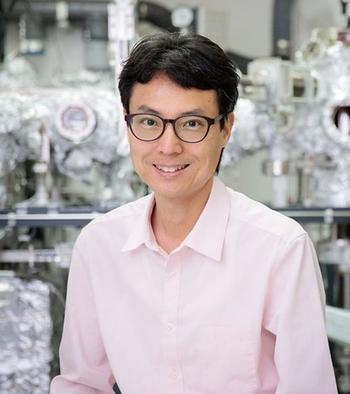The TRR 227 kindly invites you to the joint Colloquium of the TRR 227 & FU Physics Department.
Speaker: Prof. Dr. Hyunsoo Yang,
National University of Singapore
Title: Terahertz spin dynamics and magnon torques
Abstract:
Magnons, the quasiparticles of spin waves, are the elementary low-energy collective excitations in magnetic materials. Antiferromagnetic insulators (AFMIs) can host THz frequency magnons to carry angular momentums without moving charges. We examine the high-frequency optical mode of α-Fe2O3 and report that Dzyaloshinskii-Moriya (DM) interaction generates a new type of torque on the magnetic resonance [1]. The ability to electrically manipulate antiferromagnetic magnons, essential for extending the operating speed of spintronic devices into the THz regime, remains a major challenge. We demonstrate the electrical manipulation of sub-THz magnons in the α-Fe2O3/Pt heterostructure using spin-orbit torques [2]. In the α-Fe2O3/Pt heterostructure, the bilinear magnetoelectric resistance (BMER) is triggered from the asymmetric spin accumulation via modulation of the efficiency of magnon excitation, which can be utilized to electrically read the in-plane orientation of the Neel vector of α-Fe2O3 [3]. We present the direct observation of chiral damping of magnons through Brillouin light scattering (BLS) spectroscopy [4]. The resulting linewidths exhibit odd symmetry with respect to the magnon wave vector, confirming the presence of chiral damping. Our study introduces a novel methodology for quantifying chiral magnons.
We also detect THz spin resonance in an antiferromagnetic NiO heterostructure by employing both low-wavenumber Raman and continuous-wave THz spectroscopy techniques. Then, we demonstrate the electrically tunable THz spin resonance in antiferromagnetic NiO by applying charge currents along the adjacent metal layer [5]. The involvement of moving charges in electron-mediated spin torques leads to inevitable Joule heating and corresponding energy dissipation. This issue can be circumvented by magnon torques [6]. The field-free magnon torque switching of CoFeB can be observed utilizing z-spins in PtTe2 /WTe2 /NiO/CoFeB heterostructures [7], which suggests the existence of out-of-plane anti-damping magnon torques. In addition, we report the direct time-domain measurement of the velocity (up to 650 km/s) of antiferromagnetic magnons in NiO with optical-driven THz emission [8]. Our observation suggests the prospects of energy-efficient nanodevices using AFMIs considering finite dissipation in real materials.
[1] Q. Liu et al., Adv. Funct. Mater. 33, 2305173 (2023).
[2] D. Yang et al., Nat. Commun. 15, 4046 (2024).
[3] D. J. Kim et al., Nat. Mater. 23, 1509 (2024).
[4] D. Kim et al., Phys. Rev. Lett. 133, 156704 (2024).
[5] D. Yang et al., Phys. Rev. Appl. 20, 014023 (2023).
[6] Y. Wang et al., Science 366, 1125 (2019).
[7] F. Wang et al., Nat. Nanotechnol. 19, 1478 (2024).
[8] K. Lee et al., Nat. Nanotechnol. 16, 1337 (2021).
Time & Location
Jul 11, 2025 | 03:15 PM
Lecture Hall A (1.3.14) - Physics Department -
Freie Universität Berlin
(Arnimallee 14, 14195 Berlin-Dahlem)

